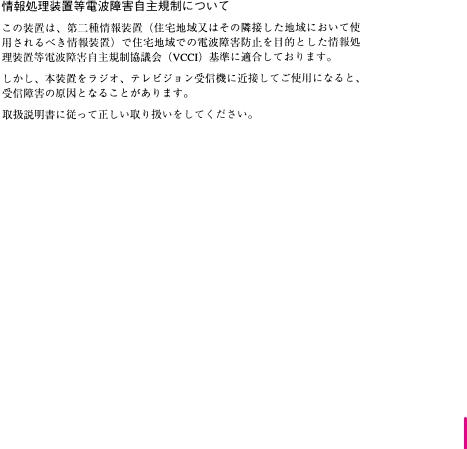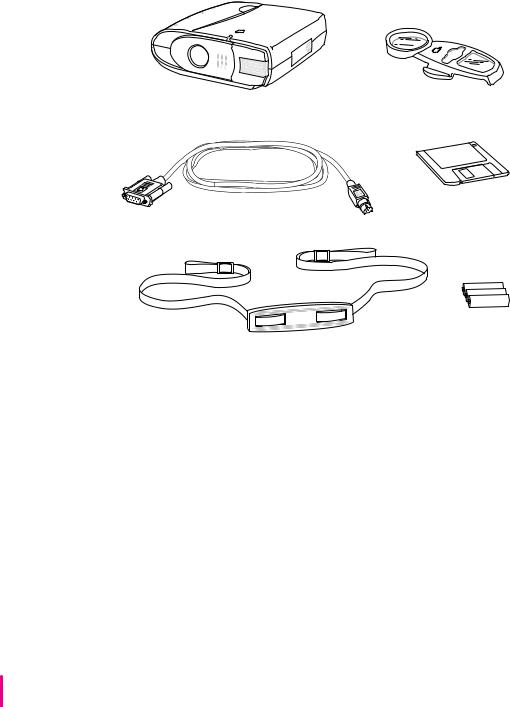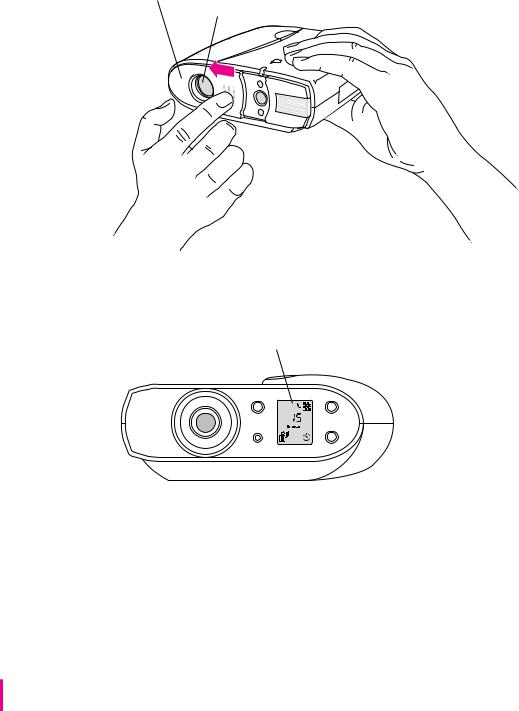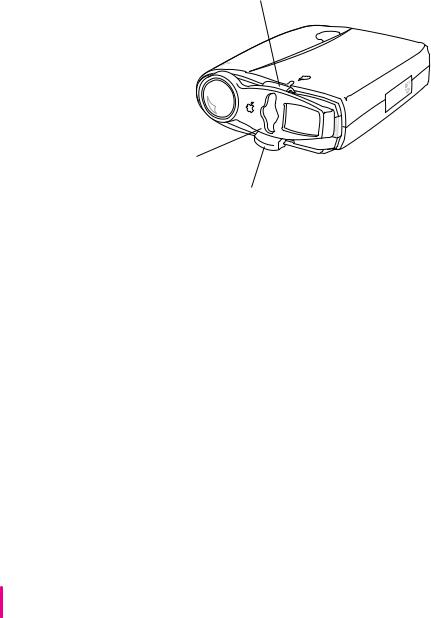Apple QuickTake 150 User Manual

Apple
QuickTake150
User’s Guide for Windows
K Apple Computer, Inc.
© 1995 Apple Computer, Inc. All rights reserved.
Under the copyright laws, this manual may not be copied, in whole or in part, without the written consent of Apple. Your rights to the software are governed by the accompanying software license agreement.
The Apple logo is a trademark of Apple Computer, Inc., registered in the U.S. and other countries. Use of the “keyboard” Apple logo (Option-Shift-K) for commercial purposes without the prior written consent of Apple may constitute trademark infringement and unfair competition in violation of federal and state laws.
Every effort has been made to ensure that the information in this manual is accurate. Apple is not responsible for printing or clerical errors.
Apple Computer, Inc. 1 Infinite Loop
Cupertino, CA 95014-2084 (408) 996-1010
Portions Copyright Eastman Kodak Company.
Apple, the Apple logo, LaserWriter, Macintosh, and PowerBook are trademarks of Apple Computer, Inc., registered in the U.S. and other countries.
Macintosh PC Exchange and QuickTake are trademarks of Apple Computer, Inc.
Adobe, Adobe Illustrator, Adobe Photoshop, and PostScript are trademarks of Adobe Systems Incorporated, which may be registered in certain jurisdictions.
Helvetica and Times are registered trademarks of Linotype Company.
HiJaack Pro is a registered trademark of Inset Systems.
MS-DOS is a registered trademark, and Windows is a trademark, of Microsoft Corporation.
QMS is a registered trademark of QMS, Inc.
QuarkXPress is a registered trademark of Quark, Inc.
Tektronix is a registered trademark of Tektronix, Inc.
Simultaneously published in the United States and Canada.
Mention of third-party products is for informational purposes only and constitutes neither an endorsement nor a recommendation. Apple assumes no responsibility with regard to the performance or use of these products.

Contents
Communications regulation information vi
1 Getting Started With the QuickTake 150 Camera |
1 |
||||
Do you have what you need? |
2 |
|
|
||
System requirements |
2 |
|
|
|
|
Your camera at a glance |
3 |
|
|
|
|
Installing the batteries |
5 |
|
|
|
|
Installing the QuickTake software |
6 |
|
|||
What’s next? |
7 |
|
|
|
|
2 Using the Camera to Capture Images |
9 |
||||
Turning on the camera |
10 |
|
|
||
Capturing images |
11 |
|
|
|
|
Focal range and flash range |
11 |
|
|||
Using the closeup lens |
12 |
|
|
||
Using the controls |
14 |
|
|
|
|
Flash settings |
14 |
|
|
|
|
Image quality settings |
15 |
|
|
||
Images captured and images available |
16 |
||||
Battery level |
16 |
|
|
|
|
Timer |
17 |
|
|
|
|
iii

Waking the camera |
18 |
|
|
|
Using the camera with a power adapter |
19 |
|
||
Traveling with the camera |
20 |
|
|
|
Using the battery booster pack with the camera |
20 |
|||
3 Using the Camera With Your Computer |
21 |
|
|||||
Connecting the camera to your computer |
|
22 |
|
||||
Looking at the images in the camera |
24 |
|
|
|
|||
Transferring images to your computer |
25 |
|
|
||||
Opening images on your computer |
26 |
|
|
|
|||
Opening an image in the image window |
|
26 |
|
||||
Opening a slide table |
27 |
|
|
|
|
||
Working with your images |
28 |
|
|
|
|
||
Editing slide names |
29 |
|
|
|
|
|
|
Getting information about a slide |
29 |
|
|
|
|||
Opening an image from the slide table |
|
30 |
|
||||
Zoom views in the image window |
31 |
|
|
|
|||
Changing the printed size of an image |
|
31 |
|
||||
Cropping an image |
32 |
|
|
|
|
|
|
Changing the bit depth of an image |
33 |
|
|
||||
Adjusting the brightness of an image |
33 |
|
|||||
Adjusting an image taken under fluorescent light |
33 |
||||||
Copying an image to another application |
34 |
|
|||||
Rotating an image |
34 |
|
|
|
|
|
|
Saving an image |
35 |
|
|
|
|
|
|
Printing your images |
37 |
|
|
|
|
|
|
Printing a slide table |
37 |
|
|
|
|
|
|
Printing a single image |
37 |
|
|
|
|
||
iv Contents

|
Naming the camera |
38 |
|
|
|
|
Setting the clock in the camera |
38 |
|
||
|
Capturing images from the computer |
39 |
|||
|
Erasing images from the camera |
40 |
|
||
4 |
QuickTake Software Menu Commands 41 |
||||
|
The File menu |
42 |
|
|
|
|
The Edit menu |
44 |
|
|
|
|
The Image menu |
45 |
|
|
|
|
The Camera menu |
|
47 |
|
|
|
The Window menu |
48 |
|
|
|
5 |
Maintenance and Troubleshooting |
49 |
|||
|
Caring for your camera and closeup lens |
49 |
|||
|
Solving problems |
50 |
|
|
|
Appendix A |
Specifications |
55 |
|
|
|
Appendix B |
Battery Information |
57 |
|
|
|
Appendix C Using the Camera With a Macintosh |
59 |
||||
|
Index 61 |
|
|
|
|
Contents v

Communications regulation information
Radio and television interference
The equipment described in this manual generates, uses, and can radiate radio-frequency energy. If it is not installed and used properly—that is, in strict accordance with Apple’s instructions—it may cause interference with radio and television reception.
This equipment has been tested and found to comply with the limits for a Class B digital device in accordance with the specifications in Part 15 of FCC rules. These specifications are designed to provide reasonable protection against such interference in a residential installation. However, there is no guarantee that interference will not occur in a particular installation.
You can determine whether your computer system is causing interference by turning it off. If the interference stops, it was probably caused by the computer or one of the peripheral devices.
If your computer system does cause interference to radio or television reception, try to correct the interference by using one or more of the following measures:
mTurn the television or radio antenna until the interference stops.
mMove the computer to one side or the other of the television or radio.
mMove the computer farther away from the television or radio.
mPlug the computer into an outlet that is on a different circuit from the television or radio. (That is, make certain the computer and the television or radio are on circuits controlled by different circuit breakers or fuses.)
If necessary, consult an Apple-authorized service provider or Apple. See the service and support information that came with your Apple product. Or, consult an experienced radio/television technician for additional suggestions. You may find the following booklet helpful: Interference Handbook (stock number 004-000-00493-1). This booklet, prepared by the Federal Communications Commission, is available from the U.S. Government Printing Office, Washington, DC 20402.
Important
Changes or modifications to this product not authorized by Apple Computer, Inc., could void the FCC Certification and negate your authority to operate the product.
This product was tested for FCC compliance under conditions that included the use of Apple peripheral devices and Apple shielded cables and connectors between system components. It is important that you use Apple peripheral devices and shielded cables and connectors between system components to reduce the possibility of causing interference to radios, television sets, and other electronic devices. You can obtain Apple peripheral devices and the proper shielded cables and connectors through an Apple-authorized dealer. For non-Apple peripheral devices, contact the manufacturer or dealer for assistance.
vi Communications Regulation Information

FCC statement
This device complies with Part 15 of the FCC rules. Operation is subject to the following two conditions:
(1)this device may not cause harmful interference, and
(2)this device must accept any interference received, including interference that may cause undesired operation.
This equipment has been tested and found to comply with the limits for a Class B digital device in accordance with the specifications in Part 15 of FCC rules. See instructions if interference to radio or television reception is suspected.
DOC statement
DOC Class B Compliance This digital apparatus does not exceed the Class B limits for radio noise emissions from digital apparatus as set out in the interference-causing equipment standard entitled “Digital Apparatus,” ICES-003 of the Department of Communications.
Observation des normes—Classe B Cet appareil numérique respecte les limites de bruits radioélectriques applicables aux appareils numériques de Classe B prescrites dans la norme sur le matériel brouilleur : “Appareils Numériques”, NMB-003 édictée par le ministre des Communications.
VCCI statement
Communications Regulation Information |
vii |

1 |
Getting Started With |
the QuickTake 150 Camera |
The QuickTake 150 is an easy-to-use digital camera that produces highquality images you can quickly transfer to your computer. With the QuickTake 150 you can capture images, and with your computer you can manipulate and modify those images to suit your purposes. The QuickTake 150 is a valuable tool for graphic artists, publishing professionals, and anyone who wants to use images to communicate.
IMPORTANT Save this manual. It contains important safety and operating instructions.
In this chapter
mAn inventory of items you need
mSystem requirements
mFeatures of the camera
mInstalling batteries in the camera
mInstalling the QuickTake software
1

Do you have what you need?
Before you begin, unpack the QuickTake 150 package. Be sure you have the items shown here:
QuickTake 150 camera |
Closeup lens |
Serial cable |
QuickTake software |
Neck strap |
Batteries |
System requirements
To use the QuickTake 150 camera with your computer, you need
man IBM or IBM-compatible personal computer with an 80386 or later processor
mWindows versions 3.1, 3.1.1 for WorkGroups, or Windows NT 3.5
mMS-DOS version 3.3 or a later version
m2 MB of available RAM
ma 3.5-inch, 1.44 MB floppy disk drive
ma hard drive with at least 10 MB available
2 Chapter 1

Your camera at a glance
This illustration shows the front and back of the camera.
Front view |
|
|
Sliding lens cover |
|
Shutter release |
(opened) |
|
|
Timer light |
|
|
Camera lens |
|
Serial port and |
|
|
|
Viewfinder lens (with light sensors |
|
power adapter port |
above and below, for the light meter) |
Built-in flash |
(behind the cover) |
Rear view
Control panel display
Viewfinder |
Battery compartment |
Control buttons
Getting Started With the QuickTake 150 Camera |
3 |

This illustration shows the closeup lens and the bottom of the camera.
Closeup lens
Viewfinder parallax correction
Closeup lens
Flash diffuser
Bottom view
Adjustable neck strap
Tripod mounting hole Neck strap attachment points
4 Chapter 1

Installing the batteries
Use the three lithium batteries that came with your camera.
WARNING Installing the batteries incorrectly may cause an explosion. Follow the instructions in this manual to replace the batteries. Use only three lithium batteries or three NiCad (nickel-cadmium) batteries. Do not mix different types of batteries in the camera. Mixing batteries may cause a fire or a small explosion.
1Flip open the door to the battery compartment.
2Insert the batteries into the camera.
1 

Position the – and + ends of each
battery as indicated on the door.
2


 3
3
 Arrange the ribbon under the batteries so you can use
Arrange the ribbon under the batteries so you can use  it to pull them out when you need to replace them.
it to pull them out when you need to replace them.
3Close the battery compartment door.
See also: Appendix B, “Battery Information.”
Getting Started With the QuickTake 150 Camera |
5 |

Installing the QuickTake software
Before you can transfer images from your camera to your computer, you need to install the necessary software on your computer. You’ll need the QuickTake disk that came with your camera. The disk contains
mthe Setup program that installs everything you need
mQuickTake, a program that transfers images from the camera to your computer
mother files needed by the QuickTake 150 camera
1Turn on your personal computer.
2Insert QuickTake for Windows Install Disk into a floppy disk drive.
3Choose Run from the Windows Program Manager File menu.
4In the dialog box that appears, type a:\setup or b:\setup depending on the drive where you inserted the disk in step 2.
5Click OK.
6 Chapter 1

6In the QuickTake Setup dialog box, click Install to begin installing QuickTake for Windows.
If there is an older version of QuickTake on your computer that you would like to replace, click Set Location. Provide the path to where the old version is installed, then click the Install button. The old files will be overwritten with the new version of QuickTake. (If you do not set a different location, the QuickTake files are placed in a directory called QTAKE in the root directory.)
Click here to install QuickTake in a different location.
Click Install to begin installing the
software. Click here to see helpful information.
Click here to close this dialog box without installing the software.
A status box keeps you informed of progress during installation.
7When you see a message reporting that the installation was successful, click OK.
A program group called Apple QuickTake appears in the Program Manager.
What’s next?
To begin capturing images, go on to Chapter 2.
Getting Started With the QuickTake 150 Camera |
7 |

2 Using the Camera to Capture Images
Because the QuickTake 150 camera is small and light and runs on batteries, you can capture images with it anywhere.
In this chapter
mTurning on the camera
mCapturing images
mUsing the closeup lens
mUsing the controls
mWaking the camera from sleep
mUsing the camera with a power adapter
mTraveling with the camera
mUsing the battery booster pack with the camera
9

Turning on the camera
To turn the camera on, slide open the lens cover.
Lens cover |
Be careful not to touch |
|
the camera lens. |
When the camera is on, the control panel display appears. If the camera does not turn on, check to make sure you’ve installed the batteries correctly (see “Installing the Batteries” in Chapter1).
Control panel display
A
10 Chapter 2

Capturing images
Look straight through the viewfinder and take time to frame the subject you want to photograph. Hold the camera steady, and press the shutter release. Because the camera delays briefly before capturing the image, be sure to hold it still until you hear the shutter click. When the camera is ready for the next image (in a few seconds), a green light glows in the viewfinder. The images can remain in the camera’s memory up to 1 year (or until you erase them).
Press the shutter release.
Viewfinder
You can hold the camera horizontally or vertically.
Focal range and flash range
Unless you are using the closeup lens, try to keep a distance of at least 4 feet between you and the object you want to photograph. Without the closeup lens, the camera can focus on objects as close as 4 feet and as far away as infinity. Objects closer than 4 feet may be out of focus, but objects in the range between 4 feet and infinity will be properly focused.
The flash can illuminate objects as close as 4 feet and as far away as 9 feet.
Focus
Flash
4' |
9' |
(Distance) |
Infinity |
Using the Camera to Capture Images |
11 |

Using the closeup lens
With the closeup lens attached, objects from 10 to 14 inches away will be properly focused. The special viewfinder adjusts the field of view so that the image appears just as it will in the photograph. (With other closeup lenses, the viewfinder images are offset.) The flash is balanced to avoid uneven lighting of the subject you’re photographing.
Insert the tab and rotate the lens downward until it snaps into place.
Press here to snap into place.
Lift this tab to remove the closeup lens.
12 Chapter 2

Judging the distance from your subject with the closeup lens
You can use the range finder triangles that are superimposed on the closeup lens to estimate your distance from the object you want to photograph.
1Find some object or part of the object you are photographing to use as a guide. The object must be approximately 3 3/8 inches (9 cm) long or wide, about the width of a credit card.
You can also use the distance between two objects as a guide.
2While looking through the viewfinder, move forward and backward until your guide just fills the space between the triangles.
When the space between the triangles is just filled with the object you’ve selected as your guide, you are 1 foot (30 cm) away from the object and the image will be properly focused.
1 foot (30 cm)
Your guide should fill the space
between the two triangles in the viewfinder.
Using the Camera to Capture Images |
13 |

Using the controls
When the camera is on, the control panel display appears.
Flash button |
Control panel display |
Image quality button |
A
|
|
|
|
|
|
|
|
Erase All button |
|
Timer button |
|||||
(explained in Chapter 3) |
|
|
|||||
Flash settings
There are three possible settings for the flash. Each time you press the flash button, you cycle from one setting to the next.
To let the camera’s light sensor determine when to flash, press the button until you see this icon.
For a flash with every image, press the button
until you see this icon.
To turn off the flash, press the button until you see this icon.
A
|
|
|
|
|
|
|
|
|
|
|
|
|
|
|
|
|
|
|
|
|
|
|
|
|
|
|
|
|
|
|
|
|
|
|
|
|
|
|
|
|
|
|
|
|
|
|
|
|
|
|
|
|
|
|
|
|
|
|
|
|
|
|
|
|
|
|
|
|
|
|
|
|
|
|
|
|
|
|
|
A stands for automatic. |
When your subject is in |
|
|
||||||||||||
When you turn on or |
shadow, and the background |
|
|
||||||||||||
wake the camera, this |
is brighter, use this setting. |
|
|
||||||||||||
setting always appears. |
|
|
|
|
|
|
|
|
|
|
|||||
14 Chapter 2

Image quality settings
There are two possible settings for image quality. Each time you press the image quality button, you switch from one setting to the other.
For standard quality, press the button until you see this icon.
For high quality, press the button until you see this icon.
A |
A |
mStandard-quality images are 640 x 480 pixels. You can capture up to 32 standard-quality images. Use standard image quality when you plan to print or display the captured image in a small size and you don’t need to show as much detail.
mHigh-quality images are 640 x 480 pixels. You can capture up to 16 highquality images. High-quality images take more space in memory than standard-quality images. Use high image quality when you plan to print or display the captured image in a larger size and you want to preserve the details of the image.
mYou can mix highand standard-quality images on the camera, all in 16 million colors (24-bit color).
Using the Camera to Capture Images |
15 |
